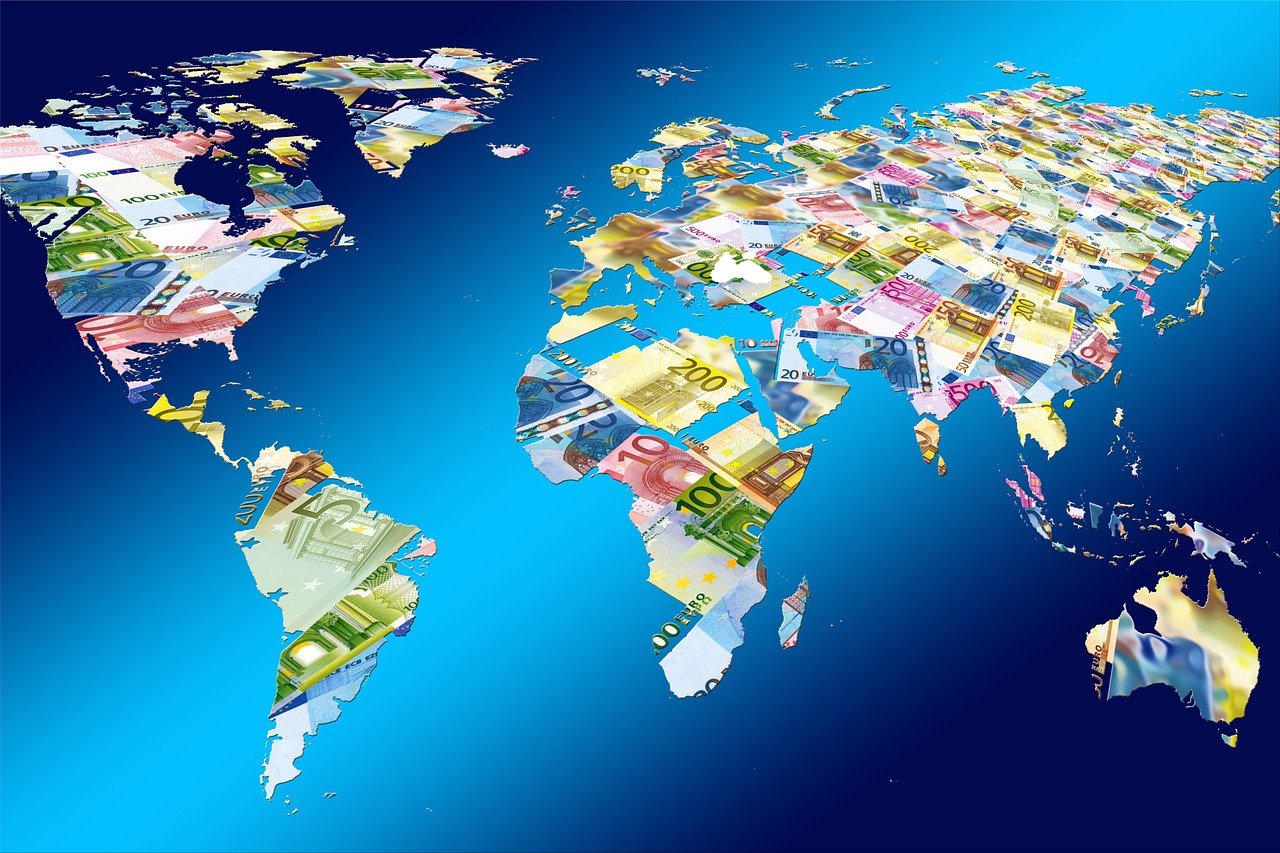5 Things to Know Before Sending Money Through an App: Understanding Payment Methods, Security Measures, Limits, and More!
GPT_Global - 2024-02-27 18:30:08.0 294
What are the different payment methods available for sending money through the app?
Sending money through a remittance app has become increasingly popular due to its convenience and efficiency. With the rise of digital payments, there are now various options available for sending money through these apps. Here are some of the different payment methods you can use when sending money through a remittance app.
1. Bank Transfers
One of the most common methods for sending money through a remittance app is through bank transfers. This method allows you to transfer money directly from your bank account to the recipient's bank account. It is a safe and secure option and is usually free or has minimal fees.
2. Debit/Credit Cards
Another popular payment method for remittance apps is through debit or credit cards. You can easily link your debit or credit card to the app and use it to send money. The transaction is instant, making it an ideal choice for urgent transfers. However, do keep in mind that this method may have higher fees compared to bank transfers.
3. Mobile Wallets
Mobile wallets are another convenient payment method for sending money through remittance apps. You can load money onto your mobile wallet and then use it to send to the recipient. This is a great option for those who do not have a bank account or do not want to use their debit or credit cards.
4. Cash Pickup
Some remittance apps also offer the option for cash pickup. This means that the recipient can collect the funds from a designated pick-up location, such as a bank branch or a partner remittance center. This is a good choice if the recipient needs immediate access to the money and does not have a bank account.
5. Cryptocurrencies
With the rise of cryptocurrency, some remittance apps now allow for sending money using digital currencies such as Bitcoin. This method is still not widely available, but it is a secure and cost-effective option for those who are familiar with cryptocurrency.
In conclusion, there are various payment methods available for sending money through a remittance app. Each method has its own advantages and fees, so make sure to choose the one that best suits your needs and budget. With the convenience of these payment methods, sending money abroad has never been easier.

How does the app ensure the security of transactions?
When it comes to remittance business, security is a top priority. No one wants their hard-earned money to be at risk of theft or fraud. That's why it's important for remittance companies to have strong security measures in place, especially when it comes to transactions. But how exactly does an app ensure the security of these transactions?
The first way is through encryption. Most remittance apps use advanced encryption technology to protect user information and transaction data. This means that all information sent between the app and the server is encrypted, making it nearly impossible for anyone to intercept and steal it.
Another important aspect is secure servers. Remittance apps typically use dedicated servers that are specifically designed to handle sensitive financial information. These servers are constantly monitored and have multiple layers of security, such as firewalls and intrusion detection systems, to prevent any unauthorized access.
In addition, user authentication is also crucial in ensuring the security of transactions. This means that users are required to go through multiple layers of verification, such as entering their password or using biometric identification, before completing a transaction. This helps prevent anyone from using a stolen or compromised account to make fraudulent transactions.
Lastly, remittance apps also have strict anti-fraud measures in place. These include fraud detection algorithms that analyze user behavior and flag any suspicious activity. If any fraudulent transactions are detected, they are immediately blocked and reported to the appropriate authorities.
In conclusion, remittance apps take various measures to ensure the security of transactions. From encryption and secure servers to user authentication and anti-fraud measures, these apps prioritize the safety of their users' money. With these security measures in place, users can have peace of mind knowing that their transactions are safe and secure.
Is there a limit on the amount of money that can be sent through the app?
Remittance businesses have become increasingly popular in recent years, offering a convenient and secure way for individuals to send money to friends and family overseas. One of the most common concerns among potential users is whether there is a limit on the amount of money that can be sent through the app.
The answer to this question depends on the specific remittance app you are using. In general, most remittance apps will have some sort of limit on the amount of money that can be sent at one time. This is often due to government regulations and anti-money laundering laws that require remittance companies to monitor and report large transactions.
For many popular remittance apps, such as Venmo or Cash App, the limit is typically around $10,000 per transaction. This may vary depending on the country you are sending money to and the currency exchange rate. Some apps may also have a monthly or yearly limit on the total amount of money that can be sent.
It's important to keep in mind that these limits are in place for the safety and security of both the sender and the recipient. By adhering to these limits, remittance companies can help prevent fraud and illegal activities.
If you need to send more than the maximum allowed amount, you may need to complete additional verification steps or split the transaction into multiple payments. The specifics will vary depending on the remittance app you are using, so it's important to read the terms and conditions carefully before sending money.
In conclusion, while there may be a limit on the amount of money that can be sent through a remittance app, this is done to ensure the safety and legality of the transaction. As long as you follow the guidelines set by the app, you can enjoy the convenience and speed of sending money to your loved ones around the world.
Can the recipient receive the money in cash or only through a bank account?
When it comes to sending money overseas, one of the most common questions is whether the recipient can receive the funds in cash or if they need to have a bank account. The answer to this question depends on the specific remittance service being used and the country where the money is being sent.
In many cases, remittance providers offer the option for the recipient to receive the money in cash. This is especially common in developing countries where access to banking services may be limited. In these cases, the recipient can simply pick up the cash at a designated location, such as a bank branch or retail store.
However, there are also many remittance services that require the recipient to have a bank account in order to receive the funds. This is often the case with online or mobile-based remittance providers. In these situations, the sender will need to provide the recipient's bank account information in order to complete the transaction.
It's important to note that even if the recipient can receive the money in cash, there may be limits on the amount they can receive at one time. This is due to various regulations and restrictions in different countries. Additionally, receiving large sums of cash can come with its own set of risks, so it's important to consider the safest and most convenient option for both the sender and recipient.
Ultimately, the ability for the recipient to receive the money in cash or through a bank account will depend on the specific remittance service being used and the country in which the funds are being sent. It's always a good idea to research and compare different options before deciding on the best method for your international money transfer needs.
Are there any additional fees or charges for using the app to send money?
When looking into using a remittance app to send money, it's important to consider any additional fees or charges that may come with the service. While each app may have different terms and conditions, most apps will have some type of fee associated with sending money. These fees can vary depending on the amount being sent, the currency exchange rate, and the payment method. Some apps may also charge a transaction fee for each transfer made. It's important to read the fine print and research any potential fees before deciding to use a specific remittance app. Additionally, it may be beneficial to compare fees between different apps to find the one that offers the lowest cost for your specific needs. In the end, understanding and being aware of any additional fees or charges for using the app can help ensure a smooth and cost-effective process when sending money internationally.
About Panda Remit
Panda Remit is committed to providing global users with more convenient, safe, reliable, and affordable online cross-border remittance services。
International remittance services from more than 30 countries/regions around the world are now available: including Japan, Hong Kong, Europe, the United States, Australia, and other markets, and are recognized and trusted by millions of users around the world.
Visit Panda Remit Official Website or Download PandaRemit App, to learn more about remittance info.



